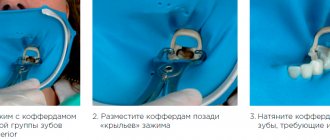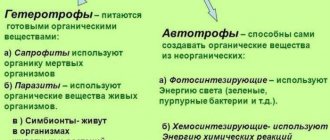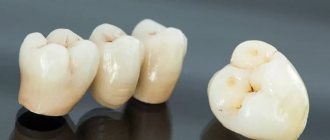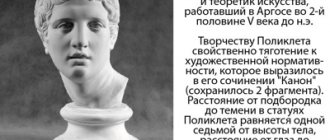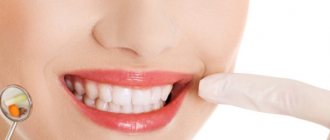Selective tooth grinding is a complex treatment method that is used for periodontal diseases. The procedure is used to correct occlusion and articulation on natural and artificial teeth, and allows you to evenly distribute the chewing load on the teeth. This is one of the most common methods in the complex therapy of periodontal diseases, which is used both in the initial and active stages of the pathological process.
Indications
Selective tooth grinding is a complex procedure that requires a strictly individual approach to each patient. In some cases, achieving an ideal ratio is impossible due to the structure of the jaw and individual teeth. In this case, the procedure is carried out in order to get as close as possible to the desired result.
The main purpose of grinding is to create uniform contact throughout the entire dentition, remove excessive load on the jaw and distribute it evenly over all teeth. To do this, hard tissues are ground off from the teeth that come into contact during chewing movements, after which they are aligned with the dentition, on which there are no points of contact.
Main indications for the procedure:
- improper closure of molars;
- increased tone of the masticatory muscles;
- displacement or deformation of the dentition due to injury;
- lack of natural tooth wear;
- abnormalities in the structure of the jaw;
- prevention of periodontal diseases.
In some cases, the grinding method is used to grind down sharp edges of teeth, which injure the tongue and oral mucosa. This saves the patient from minor injuries or damage.
How to fix crowded teeth in children
The absence of spaces between the primary canines in a small child is a sure sign that there is not enough space in the jaw. And if even baby teeth can’t fit on it, then molars definitely won’t be able to fit either. Treatment at such a young age is usually not carried out, since it is difficult to force very young children to wear orthodontic appliances, even removable ones. However, it is during this period that one very important thing needs to be done - get rid of bad habits that cause crowding: wean the baby from sucking his finger and pacifier, teach him to swallow correctly and eliminate the cause of mouth breathing.
Treatment of crowding of the upper and lower teeth in the early mixed dentition, that is, starting from 6 years of age, is carried out with the help of plates, as well as trainers, LM-activators, palatal expanders and other functional devices. At this age, it is especially effective to correct the size and position of the jaws, but it is not always necessary to correct crowding during this period. Of course, it will be possible to straighten the dentition, but there is a high probability that they will return to their previous position after the remaining molars erupt. This is why many orthodontists recommend delaying treatment until 11-13 years of age, when the bite is fully formed.
A specialist can prescribe a young patient a set of myogymnastic exercises that normalize the functioning of the oral muscles. To achieve the necessary results, it is enough to devote only 7-10 minutes a day to gymnastics. This way you can avoid not only the development of malocclusion, but also problems with the musculoskeletal system in the child.
Examples of myogymnastic exercises
✔ Button.
Hold a large flat plastic button horizontally between your lips, first for 1 minute, then for 3-5 minutes.
✔ Ruler.
Press the edge of a ruler 8-10 cm long with your lips, while holding it horizontally. Next, increase the load by placing a small object on the ruler.
✔ Air.
With your lips closed, blow air first under the upper and then under the lower lip.
✔ Cheeks.
With your lips closed, puff out your cheeks, and then slowly squeeze out the air with your fists through your clenched lips.
To eliminate anomalies in adolescence, inexpensive designs are used - the price of ceramic braces is quite justified in terms of aesthetics and treatment effectiveness, and the most disciplined children are even fitted with aligners - removable transparent aligners that must be worn at least 22 hours a day. However, even at this stage, specialists are faced with certain difficulties in the form of wisdom teeth that have not yet appeared, so they are faced with a very important question - is it worth carrying out treatment before they erupt or not?
Contraindications
Sanding is not carried out in the following cases:
- During the period of progressive periodontal inflammation. In this case, before the main procedure, the patient is prescribed a course of treatment.
- The patient has been diagnosed with dental anomalies and deformations that require treatment by other specialists (orthopedist or surgeon).
- Acute and chronic diseases of the temporomandibular joint are observed.
The grinding procedure should only be carried out by a qualified specialist. Incorrectly performed correction can lead to displacement of teeth, excessive load on the periodontium due to flattening of the dental tubercle, and removal of one or more teeth from occlusal contact.
Diagnosis of “crowded teeth” – what does it mean?
Dental crowding is a pathology characterized by close positioning and rotation of teeth. Because the teeth are too close together, some of them erupt outside the arch and overlap each other. This anomaly has several degrees of severity:
- mild
- when the crowding of teeth within one jaw is approximately 2-3 mm; - medium
- when it reaches 4-6 mm; - strong
- more than 7 mm.
Crowding can form on one or both jaws, as well as simultaneously in the anterior and lateral regions. In addition, the curvature, if left untreated, worsens over time, which leads to very sad consequences and requires more serious treatment. An interesting fact is that crowding of the lower teeth is several times more common than the upper teeth.
How does the procedure work?
The operation is carried out in several stages, with short breaks.
Preparation for the procedure is based on a preliminary visual examination of the patient. Closing the dentition helps to identify points of contact between the dental surface and the arch where this closure is absent. Next, final (more accurate) testing is done using carbon paper to identify all problem areas for further occlusion correction.
Based on the data obtained, zones for grinding are selected. The procedure itself may seem unpleasant, so it is usually carried out under the influence of an anesthetic. A preliminary test for allergic reactions eliminates all negative consequences from the use of painkillers.
The grinding procedure is carried out in three stages:
- At the first stage, a preliminary grinding procedure is carried out in order to eliminate the most pronounced unevenness of the dental surfaces. In case of significant shortening of teeth, mandatory depulpation is carried out.
- Next, the procedure is carried out on other teeth that require correction.
- After final polishing, fluoride-containing polishing pastes are used.
After each stage, treatment is carried out with special preparations that reduce tooth sensitivity.
Main directions
The techniques used in modern dentistry are based on two basic approaches:
- Jenkelson's technique involves determining the occlusal relationship through the efforts of the patient himself, without medical assistance and in a form convenient for him. Abnormally contacting areas are corrected within the framework of central and distal occlusion, while the frontal and lateral areas remain unchanged.
- Schuyler's technique determines the need to correct areas that create articulation problems. The removal procedure involves sequential treatment of distal and central, frontal, and then lateral occlusion, with mandatory manual adjustment of the jaw position.
Possible complications
If the rules for the procedure are not followed, the following complications are possible:
- decrease in interalveolar height;
- tooth displacement;
- hyperesthesia of hard tissues;
- excessive load on the periodontium after flattening the cusps of the teeth;
- removal of some teeth from occlusal contact and overload of the periodontium of others.
Therefore, the procedure can only be trusted to a dentist who has undergone special training and has the appropriate qualifications.
Completed by: 4th year student of the 2nd group of the Faculty of Dentistry Seredkina S. I. - presentation
Completed by: 4th year student of the 2nd group of the Faculty of Dentistry Seredkina S I
Periodontal diseases, when occlusion disorders develop as a result of displacement of teeth due to damage to their supporting apparatus. Prevention of periodontal diseases in individuals with delayed or absent natural wear of hard dental tissues. Deformations of the dentition. Displacement of teeth due to the loss of antagonizing or adjacent teeth leads to occlusion disturbances and the appearance of super contacts. To achieve multiple tooth contacts, selective grinding is used - an important measure in the treatment of periodontal diseases, as well as a couple of functional conditions, pathologies of the masticatory muscles and the temporomandibular joint.
Contacts that block movements of the lower jaw in various directions, disrupt physiological functions and create parafunctions. Diseases of the temporomandibular joints and masticatory muscles. Anomalies of the dental system. Correction of occlusion is necessary after completion of active orthodontic treatment of anomalies, during the retention period, to prevent the development of pathology of the masticatory muscles and joints. Orthopedic treatment with implants requires very careful correction of occlusion, since the appearance of super contacts on prostheses creates functional overload and can cause implant rejection.
Selective grinding of teeth involves the correction of occlusion and articulation by eliminating identified super contacts on natural and artificial teeth. Grinding can be started only after a thorough examination of the patient, analysis of the function of the dental system, diagnosis, drawing up a treatment plan, in difficult cases with preliminary diagnostic grinding of teeth on models installed in the articulator.
In addition to conventional examination methods, special techniques are used: analysis of occludograms, diagnostic models of jaws, marking of super contacts using carbon paper. An occludogram is a relief impression of the occlusal contacts of the dentition on a wax plate. To obtain an occludogram, a thin plate of wax is placed between the dentition, and the patient is asked to clench his teeth tightly. the plate is removed from the oral cavity, washed, dried and analyzed under bright light. Premature contacts are identified as locally thinned or perforated areas in the wax lamina. To accurately determine the premature contacts on the teeth that need to be ground off, an occludogram is applied to the lower dentition, a depressed area is found on each tooth and marked with a marking pencil selected for this purpose.
The second method for identifying traumatic occlusion and premature contacts is the analysis of plaster diagnostic models of the jaws. Diagnostic models are obtained both before systematic grinding and after it is completed. They serve as an objective control for comparison before and after treatment. On models of jaws, the lingual surface of the dentition is freely examined when they are closed, which is important for clarifying existing occlusal disorders. In some cases, jaw models in the average and individual articulators can be analyzed. It is very useful, in order to master the technique, to grind teeth on a plaster model of the jaw. Another method for identifying premature contacts is to use carbon paper. This method is especially useful in determining premature contacts when analyzing anterior and transverse occlusion, not only in the static phase, but also when excursing the lower jaw from the position of central occlusion to the anterior or right and left lateral occlusions.
There are many methods for selective grinding of teeth, based on different theoretical ideas about the occlusal relationships of the dentition during function, which are modifications of the two main methods. It is based on the fact that during various chewing movements there is no contact of teeth, it occurs indirectly through the food bolus, and the teeth close only at the final stage of food processing in central occlusion, which is the most common functional position of the lower jaw. Therefore, selective grinding of teeth is aimed at eliminating premature contacts only in central occlusion. Its main feature is that the occlusal interaction of the dentition obtained as a result of grinding is completely controlled by the patient himself, the appearance of a feeling of comfort when chewing and depends on the individual neuromuscular control of central occlusion. In other words, the closure of the dentition is carried out by the patient himself in the most convenient position for him.
Based on the fact that the anterior and lateral positions of the lower jaw are physiological states of occlusion and occur during chewing. The method is aimed at eliminating premature contacts that prevent free articulation of the dentition during function. Its peculiarity lies in the fact that the doctor controls and manually directs various movements of the lower jaw. It has now been established that the functional movements of the lower jaw are extremely diverse and include not only the central, anterior, lateral, but also the distal position of the lower jaw. The articulation of the dentition during function consists of a cyclic change of static and dynamic phases, and the predominance of some of them is determined by the type of occlusion of the patient.
To correctly analyze the occlusal relationships of the dentition, determine the localization of premature contacts and their subsequent selective grinding, it is proposed to use certain terminology and classification of areas of the occlusal surface of the teeth. The slopes of the teeth are named depending on which direction they face. Thus, the vestibular slopes of the surface of the teeth are facing the cheek, and the oral slopes are facing the tongue (palate). The division into vestibular and oral slopes is considered in the transverse direction. The slopes of the tubercles have mesial and distal slopes, which are viewed in the sagittal direction. Thus, the tubercle of the tooth has two slopes, vestibular and oral, and each slope has two slopes, mesial and distal.
The occlusal surface of the dental cusps consists of certain parts (slopes), designated classes “I”, “II”, “III”, and the corresponding surfaces of the tooth of the opposite jaw - “Ia”, “IIa”, “IIIa”. Similar to this division into classes, premature contacts that are found on teeth are also designated. Class “I” vestibular slopes of the buccal cusps of the lower molars, premolars and the vestibular surface of the lower anterior teeth. Class “I a” oral slopes of the buccal cusps of the upper molars and premolars and the oral surface of the upper anterior teeth. Class “II” oral slopes of the palatal cusps of the upper molars and premolars. Class “IIa” vestibular slopes of the lingual cusps of the lower molars and premolars. Class “III” vestibular slopes of the palatal cusps of the upper molars and premolars. Class “III a” oral slopes of the buccal cusps of the lower molars and premolars.
Selective grinding is not carried out simultaneously, but for the purpose of adaptation in several sessions, usually 3-5, with an interval of 5-7 days. Each of them should not exceed 30 minutes. On the first visit, occlusal-articulatory relationships are carefully studied with their obligatory registration in dynamics in various ways: on diagnostic models, preferably with installation in an articulator, wax, using carbon paper of different thicknesses. Preliminary grinding eliminates significant unevenness of the chewing surface of the teeth. It must be carried out in such a way as to preserve the original shape of the chewing surface, its contour, taking into account aesthetic requirements.
Pre-grinding phase, elimination of gross occlusal disharmony (Zhulev EH, 2003): and minor correction by grinding the contact (proximal) surfaces of the lower anterior teeth, which can help eliminate their crowding; b incorrect position of the lateral teeth leads to the formation of retention points; before replacing a defect in the dentition, it is necessary to grind the elongated molar of the upper jaw along the level of the occlusal surface; d an elongated tooth at the end of the dentition, which does not have an antagonist, must be ground down, as it interferes with articulation; d shortening the distal cusp of the upper molar allows the lower tooth to align; e shortening of individual displaced teeth
Also, during the first visit, correction is carried out in the position of posterior occlusion, in which premature contacts are eliminated on the mesial slopes of the vestibular slopes of the palatal cusps of the upper molars and premolars (2), as well as the distal slopes of the oral slopes of the buccal cusps of the lower premolars and molars (6), which corresponds to III and III a classes according to Jankelson, since it is in these areas that premature contacts are most often observed. In its abbreviated form, this rule in the dental literature is denoted by the Latin letters MODU (mesial, ober, distal, unter), which means mesial, upper, distal, lower. Designation of the relief of the occlusal surface of the lateral teeth, necessary for marking premature contacts: 1 oral slope of the lingual and palatal cusps; 2 vestibular slope of buccal tuberosities; 3 mesial slope of the vestibular slopes of the lingual and palatine tubercles; 4 mesial slope of the oral slopes of the buccal cusps; 5 distal slope of the vestibular slopes of the lingual and palatine tubercles; 6 distal slope of the oral slopes of the buccal cusps
Then it is necessary to eliminate premature contacts in the position of central occlusion. The question of whether to grind off the cusp or deepen the groove of the opposing tooth during CO is decided by the position of the contacting points of the same teeth during lateral occlusion. There are 3 options here: a) if, both with CO and with lateral occlusion, premature contact is observed on the same cusp, then it is ground; b) if with CO one tubercle comes into contact earlier, and with lateral occlusion both tubercles touch simultaneously, then the antagonist groove deepens, since otherwise with lateral occlusion there will be no contact at all; c) if with CO one tubercle comes into contact earlier, and with lateral occlusion there is no contact with the antagonist at all, then the groove also needs to be deepened, since otherwise the gap with lateral occlusion will be even larger. During this visit, the elimination of class II and III supracontacts is also carried out. The palatal cusps of the teeth of the upper jaw and the buccal cusps of their antagonists should not be excessively ground, as they maintain the interalveolar height. Its reduction in the process of selective grinding is unacceptable.
After correctly performed selective grinding of teeth in central occlusion, simultaneous, bilateral multiple contact of the dentition of the upper and lower jaw is restored. Premature contacts with central occlusion can also be detected on the anterior teeth. To determine the grinding area, the following test is carried out. If, when the lower jaw is advanced, premature contact between the front teeth remains, the lower incisors are subject to shortening, since their cutting edge, sliding along the palatal surface of the upper teeth, causes a violation of occlusion. If, when moving the lower jaw forward, premature contact between the antagonizing teeth disappears, then this is an indication for correcting the palatal surface of the upper incisors. In this case, the cause of premature contact is the upper jaw tooth. In this case, shortening the lower incisor is unacceptable, since this can again lead to the formation of premature contact as a result of its subsequent secondary movement.
Premature contacts during lateral occlusion are also eliminated. First of all, premature contacts on the balancing side (so-called hyperbalancing contacts), which prevent the teeth of the working side from closing, are eliminated. Only then can you move on to assessing and correcting the closure of the teeth on the working side. Then they begin grinding in the position of anterior occlusion, with various options possible. To resolve the issue of grinding points, the lower jaw is shifted to the position of central occlusion. If in this position the cutting edge of the lower front tooth comes into contact, the cutting edge of the upper incisor is ground. If the labial surface of the lower front tooth comes into contact with the central occlusion, the cutting edges of the upper and lower incisors are ground (the central incisor is not affected). If the cutting edge of the upper front tooth contacts in central occlusion, the cutting edge of the lower incisor is ground.
One of the basic rules for grinding molars and premolars with lateral occlusion on the working side is the BOLU rule: “buccal ober - lingual unter” - the upper buccal and lower lingual cusps must be ground. In the case of early contact, the buccal cusp of the upper tooth and the lingual cusp of the lower tooth are first ground off, then the chewing surfaces of the tooth crowns are narrowed. As a result, the shape of the tooth crowns approaches the correct one. At each return visit, a thorough follow-up examination of previously ground teeth is necessary to identify and eliminate residual premature contacts. During each visit, it is necessary to polish the ground surfaces of hard dental tissues, as well as treat them with products that reduce tooth sensitivity. After the final correction of the occlusal surface, a follow-up examination of the patient is carried out every other day, then after 6 months. Grinding of chewing teeth with lateral occlusion: a grinding of the buccal cusp of the upper tooth and the lingual cusp of the lower tooth; b narrowing of the chewing surfaces of the tooth crowns; like teeth after grinding
excessive grinding of the cusps of the teeth leading to a decrease in the height of the bite, flattening and expansion of the chewing surface of the teeth. A reduced sliding bite occurs. insufficient grinding - many premature contacts will remain unresolved, progression of trauma to periodontal tissues, the appearance of increased sensitivity of hard dental tissues to temperature, chemical and mechanical stimuli, excessive load on the periodontium after flattening the cusps of the teeth, removal of some teeth from the occlusal contact and overload of the periodontium of others, resulting from unsystematic implementation techniques
Diagnosis, treatment and prevention of periodontal diseases L. M. Tsepov, A. I. Nikolaev, E. A. Mikheeva Orthopedic dentistry. I. Yu. Lebedenko, E. S. Kalivradzhiyan Article “Selective grinding of teeth”
Teeth crowding: treatment without braces
One of the most common alternative methods for treating crowding is separation - minimal grinding of the contact surfaces of the teeth, no more than 0.5 mm. Separation allows you to get up to 4 mm of free space, which in some situations is quite enough for leveling. During grinding, it is very important not to overdo it and not remove too much hard tissue, which can lead to increased sensitivity of the tooth.
In some cases, crowding is eliminated by installing veneers, lumineers and crowns. However, orthopedic structures can only be effective for minor curvatures. Otherwise, in order to install them, you will have to grind down the tooth, which will lead to extremely disastrous consequences.
Important!
Orthodontic structures will help correct the position of the teeth, but not their shape and size - veneers, lumineers or crowns are installed for these purposes.
Treatment with braces
Braces can correct crowded teeth in both adulthood and adolescence. There are several options for eliminating crowding orthodontically:
➢
expansion of the dentition;
➢
separation (grinding the contact surfaces of teeth);
➢
distalization, that is, the movement of teeth towards the lateral ones;
➢
extraction (removal).
X-rays, in particular teleroentgenograms and computed tomography, help determine which treatment method is suitable in a particular clinical case. Using them, the specialist determines the volume and condition of the bone tissue, the type of gum, and based on the data obtained, draws up a plan for moving the teeth.
Important!
In order to avoid relapse, after removing braces, it is mandatory to wear a retainer - a thin plate that is attached to the lingual side of the teeth. The period of wearing it is twice as long as the duration of treatment.
Crowding and wisdom teeth
There are many situations where the eruption of “eights” led to repeated crowding, but this is not at all a reason to refuse early correction of the anomaly. “Wise” teeth are formed by the age of 12, which allows you to see them in the picture and create a treatment plan taking into account the peculiarities of their eruption. Of course, if there is not enough space in the bone, experts prefer not to take risks and remove wisdom teeth in their infancy in order to avoid recurrence of crowding. Waiting for the “eights” to erupt is also not entirely reasonable, since they can appear either very late - around the age of 27, or remain retained. If there is enough space in the bone, wisdom teeth should not be removed - if they erupt correctly, they will be included in the chewing process.
Interesting fact!
Wisdom teeth are one of the rudiments of our body. They rarely participate in the bite, are not always formed and quite often - in about 20 - 25% of cases - remain impacted, that is, they do not erupt. Therefore, if a patient is indicated for tooth extraction due to their crowding, attention should be paid to the “eights” first.
Tooth extraction for overcrowding
Unfortunately, in some cases, it is not possible to treat crowding with braces without removing teeth. For example, it cannot be avoided when there is not enough space in the jaw for teeth to move. As we found out, the first candidate for removal is a wisdom tooth. However, even its absence does not guarantee the presence of space in the bone. In this case, experts recommend removing “fours” and sometimes “fives”. Removing even two teeth helps to “get” 6 to 8 mm of free space.
Another indication for extraction is supernumerary teeth and macrodentia. If they are removed at an early age, the dentition can take the correct position on its own and will not require orthodontic correction. However, at a later age you cannot do without it.
